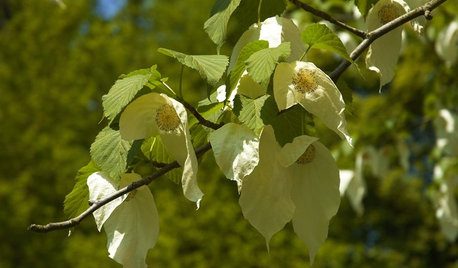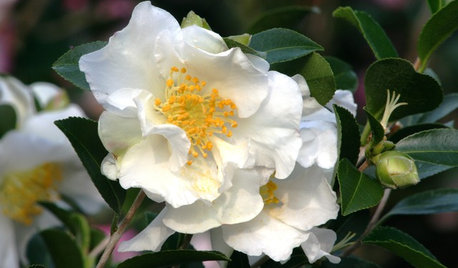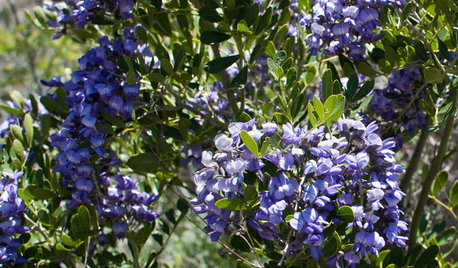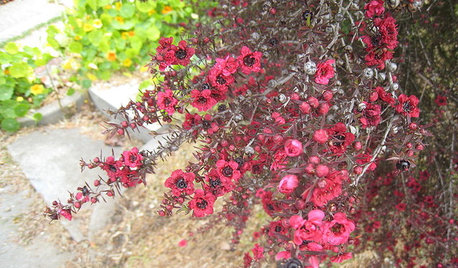Mimosa tree not flowering?
elissabee
16 years ago
Related Stories

SPRING GARDENING7 Spectacular and Practical Spring-Flowering Trees
Put on a beauteous show in the garden with a landscape tree awash in flowers — just do your homework first
Full Story
TREES7 Deer-Resistant Flowering Trees to Plant this Fall
If you live in a neighborhood with roaming deer, consider these beautiful trees that won't tempt hungry guests
Full Story
GARDENING GUIDESGreat Design Tree: The Dove Tree
With distinctive fluttery flowers and a height that towers over the landscape, the dove tree provides a respite from the summer sun
Full Story
GARDENING GUIDESGreat Design Tree: Australian Tea Tree
A living sculpture with an unmistakable appearance, this coastal native creates an intriguing landscape scene
Full Story
GARDENING GUIDESLet Lilac Love Flower This Spring
Whatever you bestow or receive for Mother's Day, lilacs can be an unmatched gift in the garden in May
Full Story
WINTER GARDENING6 Flowers for Gorgeous Winter Garden Color
Blooming beauties can be yours from January through March — just take your pick from these bulbs, shrubs and even a tree
Full Story
TREESGreat Design Plant: Cascalote Tree for Sunny Southwestern Style
Enjoy lovely yellow flower spikes in fall and winter with this drought-resistant tree
Full Story
TREES6 Unsung Spring-Blooming Trees
Billowy blooms and rare fragrances will make you wonder how these flowering trees could ever have been underused in landscapes
Full Story
GARDENING GUIDESPlant Black Cherry Trees for the Birds and Bees
Plant Prunus serotina in the Central and Eastern U.S. for spring flowers, interesting bark and beautiful fall color
Full Story
GARDENING GUIDESGreat Design Plant: New Zealand Tea Tree
Balance pretty polish and ruggedness in a temperate garden with this low-maintenance and drought-tolerant flowering shrub
Full Story







alexander3_gw
Iris GW
Related Professionals
Ballwin Landscape Architects & Landscape Designers · Simi Valley Landscape Architects & Landscape Designers · Waterbury Landscape Contractors · Bowie Landscape Contractors · Broomfield Landscape Contractors · Columbine Landscape Contractors · Lees Summit Landscape Contractors · Long Beach Landscape Contractors · Maywood Landscape Contractors · North Potomac Landscape Contractors · North Richland Hills Landscape Contractors · Albemarle Decks, Patios & Outdoor Enclosures · Clute Decks, Patios & Outdoor Enclosures · Lewisville Decks, Patios & Outdoor Enclosures · Royal Oak Decks, Patios & Outdoor EnclosureselissabeeOriginal Author
elissabeeOriginal Author
Embothrium
Iris GW
J Narvaez
quirkyquercus
elissabeeOriginal Author
Iris GW
elissabeeOriginal Author
quirkyquercus
alexander3_gw
alexander3_gw
Iris GW
Fledgeling_
elissabeeOriginal Author
Iris GW
johnaberdeen
elissabeeOriginal Author
Fledgeling_
Embothrium
J Narvaez
quirkyquercus
elissabeeOriginal Author
Fledgeling_
johnaberdeen
quirkyquercus
Fledgeling_
texasredhead
radagast
alexander3_gw
jason_2007
BTMorris_pol_net
davealju
snasxs
Fledgeling_
snasxs
Fledgeling_
snasxs
David Champ